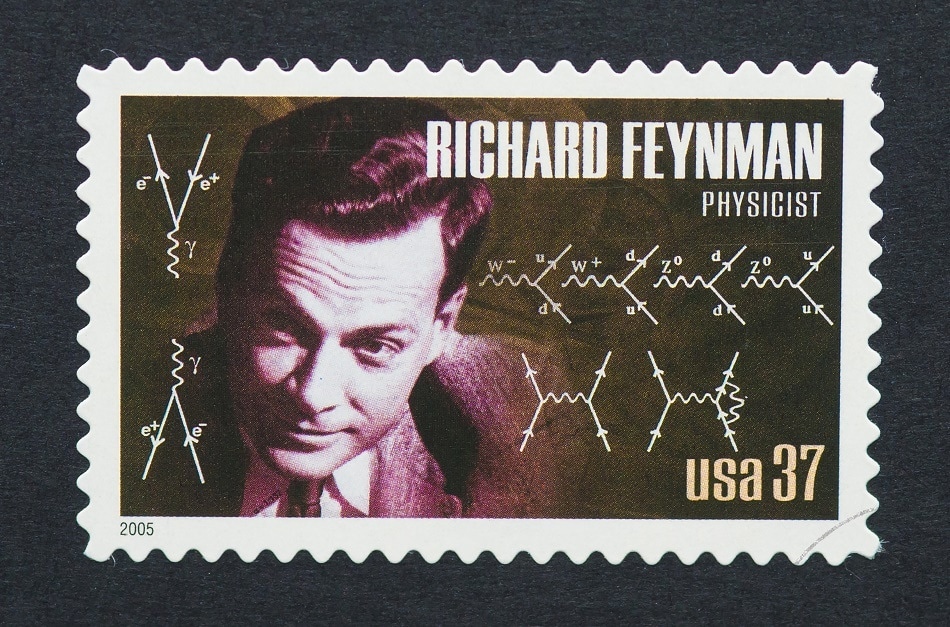 By Dhruv TyagiMay 31 2018
By Dhruv TyagiMay 31 2018On December 29, 1959, revolutionary physicist Richard Feynman gave a lecture entitled ‘There’s Plenty of Room at the Bottom’ at American Physical Society meeting at Caltech. This lecture which went unnoticed for a long time later motivated researchers all over the world to think about manipulation of matter at atomic scales.
Feynman was not interested in building miniaturized versions of the existing macroscopic machines at the microscopic level but was more interested to construct machines which would enable researchers to build microbiological machines and tools that can mimic natural microbiological materials. Inspired by this talk, Kim Eric Drexler at MIT proposed the idea of a nanoscale assembler having the capability of self-replication as well as construction of structures of arbitrary complexity in his 1986 book ‘Engines of Creation: The coming Era of Nanotechnology’. Still, Feynman’s lecture is cited by most of the researchers as the birth of foundations for Nanotechnology.
Let’s give some context to the scales used for nanotechnology. A nanometer is a billionth of a meter. If it’s difficult to comprehend, look at your nails. One nanometer is the length your nail grows in one second. That’s how small that is! Another example is a strand of DNA which is about 2.5 nanometers in width.

Shutterstock.com/catwalker
Future of Nanotechnology is an active topic of discussion among researchers, futurists, industrialists, technologists, engineers as well as people of non-scientific backgrounds. Since nanotechnology covers a wide scope of applications, there’s a need for review of some of these applications and the technology involved. Hollywood movies use highly effective computer generated imagery to present some of these potential technologies. In Avengers: Infinity Wars, Tony Stark’s bleeding edge armor can regenerate itself if destroyed. He can activate his suit just by a simple press of button and because it literally builds itself, he can get hold of tools by just commanding his suit to build them. There has been no shortage of such nanotechnology based movies such as Transcendent man, Day the Earth Stood Still, Ant Man and Star Trek movies. In reality, the wonders of nanotechnology still amaze researchers every day when they are working in their lab trying to understand and manipulate the matter at such small scales.
Some of the uses of nanotechnology in medicine in present and future are as following:
-
Targeted Drug Delivery
Nanotechnology based diagnostics and treatment will be possible in near future. Also, known as theragnostics or smart drugs, these on the spot real time diagnostic tools and drug delivery systems are a hot topic among researchers. The goal of these systems is to deliver a particular drug to the area of interest with high precision. This is done by employing highly specific nanoparticles that are loaded with drugs by a method called functionalization. These modified entities are highly target specific and attack only the diseased tissue and avoid interaction with surrounding health tissues. This can be a key to treat cancer without harming the healthy cells thus overcoming the side effects of radiotherapy and chemotherapy.
-
Gene Therapy
Gene Therapy is the practice to treat hereditary or acquired diseases. This is possible by efficient transportation of genes, nucleic acid or viral vectors to target cells in vivo or in vitro. Magnetic nanoparticles can be used to achieve this and the process is called magnetofection.
-
Tissue Engineering
Natural bone is inherently having nanoscale features and grains of about 100 nanometers. If a dissimilar bone implant is put, the body would try to reject it. By creating bio-mimicked nano-sized features on the surface of the implant, the chances of the rejection are significantly reduced and there is a stimulation of production of osteoblasts.
-
Enhancement in MRI Contrast
Superparamagnetic iron oxide nanoparticles can be used as intravenous contrast agents for lymphatic system and bone marrow with a longer blood half-life perfusion agent for brain and heart. These nanoparticles can easily breach capillary walls, which allows them to image the tissues which were pretty much inaccessible to MRI imaging with larger sized contrasting agent particles. This will allow much clearer MRI images.
Nanotechnology for water treatment
Other than medicine, nanotechnology will be used for efficient water treatment and purification. Materials called nanoadsorbents are used for this purpose. Adsorption is the property by which a material attracts molecules of gases, solutes and liquids to its surface. Unlike absorption which is a bulk phenomenon, adsorption is a surface phenomenon and happens only on the first few layers of the surface. Nanoadsorbents have high aspect (surface-to-volume) ratio, which enhances its adsorption capability multifold as compared to its conventional counterparts. These nanoadsorbents show high adsorption of organic compounds and pollutants. This allows them to provide much more efficient decontamination process by removing these organic compounds and other impurities such as heavy metals. Current research revolves around the use of carbon nanotubes (CNTs), metal based nanoadsorbents, zeolites and polymer based nanoadsorbents.
$
Nanotechnology for Electronics and IT
Most of the future electronics will be based on nano-engineered devices. Nanotechnology has already made major contributions in development of smaller, faster and more energy efficient portable electronic systems. Some contributions that nanotechnology can make in electronics and IT are as following:
- Smaller and smaller transistors. Smaller transistors mean more transistors can be implanted on per square unit. More transistors will efficiently increase the processing speed of the chip. In 2016, Berkeley National Lab demonstrated a functioning transistor that was only one nanometer along its cross section!
- Magnetic random access memory (MRAM) will enable computers to boot almost instantly. These MRAMs are enabled by nano-engineered magnetic tunnel junctions and can provide a quick data saving capability along with a faster boot.
- Low cost Ultra High Definition (UHD) displays which employ highly efficient quantum dots for color production will hit the markets.
- 4. Flexible electronics will hit the consumer electronics market. These devices will be based on polymeric materials embedded with nanoparticles or quantum dots to make the electron conduction. Other possible materials can be semiconductor thin films, low dimensional materials such as graphene and metal nanosheets.
We have discussed a few possibilities of application of nanotechnology in coming few years. There are still many limitations to current developments of these devices such as low yield and difficulty for mass production. But with ever developing fabrication technology these devices will reach every household in the near future.
https://aapt.scitation.org/doi/abs/10.1119/1.2213634
https://www.nature.com/articles/nrc.2016.108
https://www.ncbi.nlm.nih.gov/pmc/articles/PMC4294021/
https://www.nano.gov/you/nanotechnology-benefits
Disclaimer: The views expressed here are those of the author expressed in their private capacity and do not necessarily represent the views of AZoM.com Limited T/A AZoNetwork the owner and operator of this website. This disclaimer forms part of the Terms and conditions of use of this website.